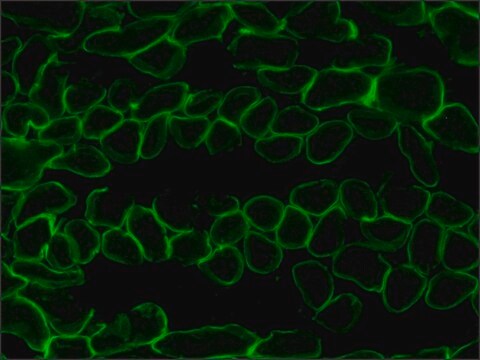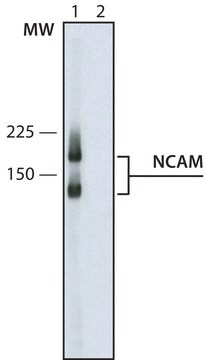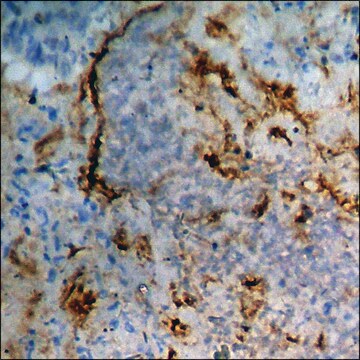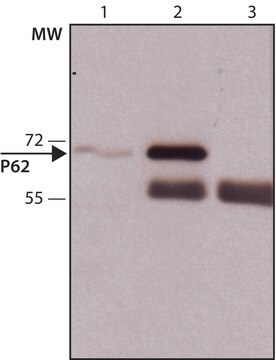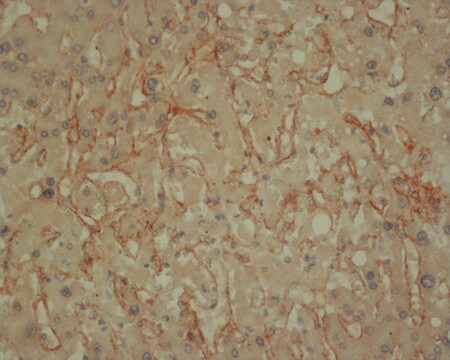L8271
Monoclonal Anti-Laminin antibody produced in mouse
clone LAM-89, ascites fluid
Synonym(s):
Anti-Laminin Antibody
About This Item
Recommended Products
biological source
mouse
Quality Level
conjugate
unconjugated
antibody form
ascites fluid
antibody product type
primary antibodies
clone
LAM-89, monoclonal
contains
15 mM sodium azide
species reactivity
feline, human, pig
should not react with
rabbit, lizard, sheep, carp, canine, chicken, rat, guinea pig, goat, frog, snake
technique(s)
immunohistochemistry (formalin-fixed, paraffin-embedded sections): 1:1,000 using enzyme-treated human tissue sections
indirect ELISA: suitable
western blot: suitable
isotype
IgG1
shipped in
dry ice
storage temp.
−20°C
target post-translational modification
unmodified
Gene Information
human ... LAMA1(284217) , LAMA2(3908) , LAMB1(3912) , LAMB2(3913)
General description
Immunogen
Application
- immunohistochemistry to stain matrix proteins
- double immunofluorescence staining
- indirect immunofluorescence
- immunogold labelling for electron microscopy
Biochem/physiol Actions
Disclaimer
Not finding the right product?
Try our Product Selector Tool.
Storage Class Code
12 - Non Combustible Liquids
WGK
nwg
Flash Point(F)
Not applicable
Flash Point(C)
Not applicable
Choose from one of the most recent versions:
Certificates of Analysis (COA)
Don't see the Right Version?
If you require a particular version, you can look up a specific certificate by the Lot or Batch number.
Already Own This Product?
Find documentation for the products that you have recently purchased in the Document Library.
Customers Also Viewed
Our team of scientists has experience in all areas of research including Life Science, Material Science, Chemical Synthesis, Chromatography, Analytical and many others.
Contact Technical Service
